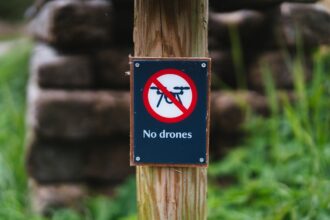Rocket-Propelled Grenades (RPGs) have become synonymous with modern warfare, particularly in their role as anti-tank weapons. These portable, shoulder-fired weapons have transformed the battlefield, allowing infantry to engage armored vehicles with surprising effectiveness.
As tanks have evolved into formidable machines of war, so too have the weapons designed to counter them, leading to a dynamic interplay between armor and anti-armor capabilities. The significance of RPGs in tank warfare cannot be overstated. They have democratized the ability to challenge heavily armored vehicles, enabling smaller, less equipped forces to hold their ground against more powerful adversaries.
This shift has altered military strategies and tactics, compelling armies to rethink their approaches to armored warfare. The evolution of RPG technology and its tactical implications have reshaped the landscape of modern combat, making it essential to understand the historical context and future trajectory of these weapons.
Key Takeaways
- RPGs (Rocket Propelled Grenades) are a type of portable anti-tank weapon commonly used in modern warfare.
- RPGs have been used in conflicts throughout history, with their effectiveness in tank warfare well-documented.
- The evolution of RPG technology has led to advancements in range, accuracy, and armor-piercing capabilities.
- RPGs have significant tactical implications in tank warfare, urban warfare, guerrilla warfare, and the rise of insurgencies.
- Countermeasures and defense against RPGs are crucial for modern military forces to mitigate their impact on tank warfare.
Historical Context: RPGs in Conflict
The origins of RPGs can be traced back to World War II, where early iterations of anti-tank weapons began to emerge. However, it was during the Cold War that the RPG gained prominence, particularly with the introduction of the Soviet-designed RPG-7 in the 1960s. This weapon quickly became a favorite among various insurgent groups and national armies alike due to its affordability and effectiveness.
The RPG-7’s design allowed for a range of ammunition types, including high-explosive anti-tank (HEAT) rounds, which could penetrate the armor of most tanks of that era.
Their effectiveness against armored vehicles was demonstrated repeatedly, leading to significant losses for tank crews who underestimated the threat posed by these handheld weapons.
The proliferation of RPGs in conflict zones highlighted their role as equalizers on the battlefield, allowing lightly armed forces to challenge conventional military power effectively.
RPGs as Anti-Tank Weapons

RPGs are primarily designed to counter armored vehicles, making them a critical component of modern infantry tactics. The high-explosive anti-tank rounds they fire are engineered to penetrate armor through a shaped charge mechanism, allowing them to inflict significant damage on tanks and other armored vehicles. The simplicity and portability of RPGs enable soldiers to carry them into combat easily, providing a means for infantry units to engage enemy armor without requiring extensive training or support.
The effectiveness of RPGs as anti-tank weapons is further enhanced by their versatility. Different types of warheads can be employed depending on the target and tactical situation. For instance, tandem-charge warheads are designed to defeat reactive armor systems that many modern tanks utilize for protection.
This adaptability allows RPGs to remain relevant even as tank technology advances, ensuring that they continue to pose a significant threat on the battlefield.
Evolution of RPG Technology
| Decade | Technology | Impact |
|---|---|---|
| 1970s | Mainframe computers | Introduced text-based RPG games |
| 1980s | Personal computers | Graphics and sound capabilities improved RPG gaming experience |
| 1990s | CD-ROMs and internet | Allowed for larger game worlds and online multiplayer RPGs |
| 2000s | 3D graphics and online connectivity | Enabled immersive and interactive RPG experiences |
| 2010s | Mobile devices and cloud gaming | Increased accessibility and portability of RPG games |
Over the decades, RPG technology has undergone significant advancements, reflecting changes in warfare and military needs. The original RPG-7 has seen numerous modifications and upgrades, resulting in variants that boast improved accuracy, range, and lethality. Newer models incorporate advanced guidance systems and enhanced warhead designs that increase their effectiveness against modern armored vehicles.
Moreover, the development of multi-role RPG systems has expanded their utility beyond anti-tank operations. Some modern RPGs can fire guided missiles or specialized rounds designed for use against fortifications or personnel. This evolution has allowed infantry units equipped with RPGs to adapt to various combat scenarios, making them invaluable assets in both conventional and unconventional warfare.
Tactical Implications of RPGs in Tank Warfare
The presence of RPGs on the battlefield has profound implications for tank warfare tactics. Armored units must now operate under the constant threat of being engaged by infantry armed with these weapons. This reality has led to changes in how tanks are deployed and utilized in combat scenarios.
For instance, tank crews are trained to maintain situational awareness and employ tactics that minimize exposure to potential RPG fire. Additionally, the integration of infantry support has become increasingly important in armored operations. Tanks are often accompanied by dismounted soldiers who can provide security against potential threats from RPG-wielding adversaries.
This combined arms approach aims to create a protective bubble around armored vehicles, allowing them to operate more effectively while mitigating risks associated with RPG attacks.
RPGs and Urban Warfare

Urban environments present unique challenges for armored units, and the presence of RPGs exacerbates these difficulties. In cities and towns, the close quarters and numerous hiding spots provide ideal conditions for infantry armed with RPGs to ambush tanks and other armored vehicles. The ability to engage from concealed positions makes it challenging for tank crews to identify and neutralize threats before they can fire.
Furthermore, urban warfare often involves complex terrain that limits the mobility and effectiveness of tanks. Narrow streets and tight corners can hinder maneuverability, making it easier for RPG operators to strike from unexpected angles. As a result, military planners must account for the potential presence of RPGs when developing strategies for urban combat, emphasizing the need for reconnaissance and intelligence-gathering operations.
RPGs and Guerrilla Warfare
RPGs have become a hallmark of guerrilla warfare tactics due to their accessibility and effectiveness against more powerful conventional forces. Insurgent groups often rely on hit-and-run tactics that leverage the strengths of RPGs, allowing them to inflict damage on enemy armor while minimizing their own exposure to return fire. This asymmetrical approach has proven successful in various conflicts around the world.
The psychological impact of RPGs cannot be overlooked either. The mere presence of these weapons can instill fear in enemy forces, leading to caution and hesitation in their movements. Guerrilla fighters equipped with RPGs can disrupt supply lines and hinder operations by targeting armored vehicles that are critical for logistical support.
This dynamic creates a challenging environment for conventional forces attempting to maintain control over contested areas.
RPGs and the Rise of Insurgencies
The proliferation of RPGs has played a significant role in the rise of insurgencies across different regions. As these weapons became more widely available, they empowered local groups to challenge established governments or foreign occupying forces effectively. The ability to engage armored vehicles with relative ease has allowed insurgents to level the playing field against better-equipped adversaries.
In many cases, insurgent groups have adopted RPGs as symbols of resistance against oppression or foreign intervention. Their use in high-profile attacks against armored convoys or military installations can galvanize support among local populations and attract new recruits. This phenomenon underscores the importance of understanding the socio-political context surrounding the use of RPGs in insurgent movements.
Countermeasures and Defense Against RPGs
In response to the threat posed by RPGs, military forces have developed various countermeasures aimed at mitigating their effectiveness. One common approach is the implementation of reactive armor systems on tanks, which are designed to detonate incoming projectiles before they can penetrate the vehicle’s main armor. These systems have proven effective against certain types of RPG warheads but require continuous innovation as new threats emerge.
Additionally, active protection systems (APS) have been developed to detect and intercept incoming projectiles before they reach their targets. These systems utilize radar and other sensors to identify threats and deploy countermeasures such as intercepting projectiles or deploying smoke screens to obscure visibility. While these technologies represent significant advancements in tank defense, they also require substantial investment and maintenance.
RPGs in Modern Warfare
In contemporary conflicts, RPGs continue to play a vital role in shaping military engagements across various theaters of war. Their presence is felt not only in traditional battlefields but also in asymmetric conflicts where non-state actors challenge established military powers. The adaptability of RPG technology ensures that these weapons remain relevant even as warfare evolves.
Moreover, advancements in technology have led to new developments in ammunition types and guidance systems for RPGs. Some modern variants are equipped with laser guidance or other targeting mechanisms that enhance accuracy and effectiveness against moving targets. As military forces continue to adapt their strategies in response to emerging threats, it is likely that RPGs will remain a key component of anti-tank operations for years to come.
The Future of RPGs in Tank Warfare
The future of RPGs in tank warfare is likely to be shaped by ongoing technological advancements and evolving military strategies. As armored vehicles become more sophisticated with enhanced armor and defensive systems, it is expected that anti-tank weapons will also continue to evolve in response. The development of new warhead designs or guidance systems may further enhance the effectiveness of RPGs against modern armor.
Moreover, as conflicts become increasingly urbanized and asymmetric in nature, the role of RPGs will likely expand beyond traditional anti-tank applications. Their versatility may see them employed in various combat scenarios, from urban warfare to counterinsurgency operations. Ultimately, understanding the trajectory of RPG technology and its implications for tank warfare will be crucial for military planners seeking to navigate an ever-changing battlefield landscape.
The impact of RPGs on tanks has been a significant topic of discussion in modern military strategy, as these portable anti-tank weapons have evolved to pose a substantial threat to armored vehicles. For a deeper understanding of how RPGs have changed the dynamics of armored warfare, you might find it insightful to explore related discussions on military tactics and technology. An article that delves into similar themes can be found on the website “In The War Room.” You can read more about the broader implications of RPGs and other anti-tank measures by visiting this related article. This resource provides a comprehensive look at how advancements in weaponry continue to shape the battlefield.
FAQs
What is an RPG?
An RPG, or Rocket Propelled Grenade, is a portable, shoulder-launched, anti-tank weapon system that fires rockets equipped with an explosive warhead.
How does an RPG impact tanks?
RPGs can cause significant damage to tanks by penetrating their armor and causing internal damage or disabling critical systems. The impact of an RPG on a tank can vary depending on factors such as the type of RPG, the angle of impact, and the armor of the tank.
What are some common tactics used by tanks to defend against RPGs?
Tanks can employ various tactics to defend against RPGs, including using reactive armor, deploying smoke screens, utilizing electronic countermeasures, and employing infantry support to detect and neutralize RPG threats.
What advancements have been made in tank technology to counter the threat of RPGs?
Advancements in tank technology to counter the threat of RPGs include the development of advanced armor materials, active protection systems, and improved situational awareness and targeting capabilities.
What are some examples of tanks that have been impacted by RPGs in combat?
Tanks such as the M1 Abrams, T-72, and Leopard 2 have been impacted by RPGs in various combat scenarios. These incidents have led to ongoing efforts to enhance tank protection and survivability against RPG threats.




